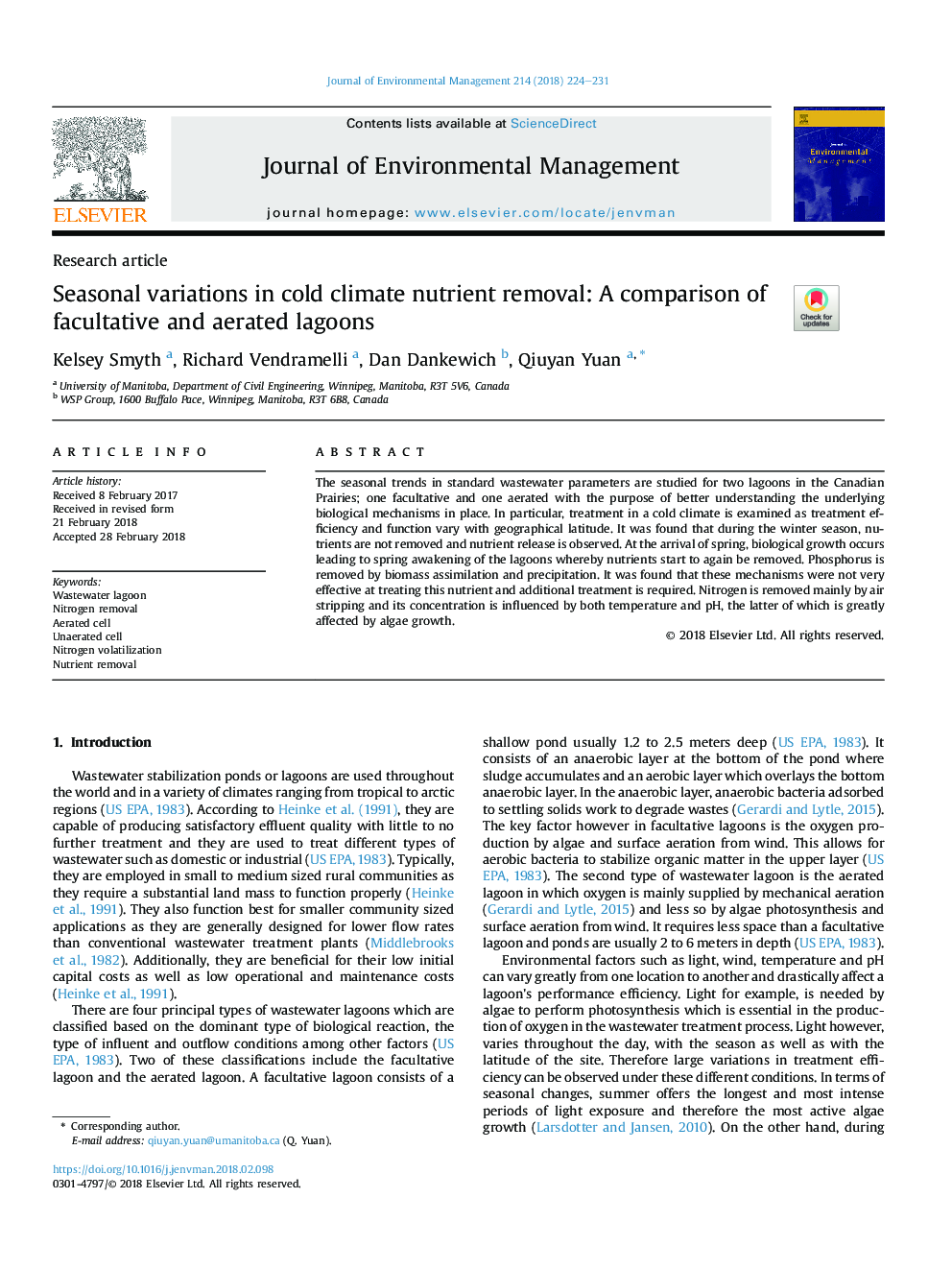| Article ID | Journal | Published Year | Pages | File Type |
|---|---|---|---|---|
| 7477672 | Journal of Environmental Management | 2018 | 8 Pages |
Abstract
The seasonal trends in standard wastewater parameters are studied for two lagoons in the Canadian Prairies; one facultative and one aerated with the purpose of better understanding the underlying biological mechanisms in place. In particular, treatment in a cold climate is examined as treatment efficiency and function vary with geographical latitude. It was found that during the winter season, nutrients are not removed and nutrient release is observed. At the arrival of spring, biological growth occurs leading to spring awakening of the lagoons whereby nutrients start to again be removed. Phosphorus is removed by biomass assimilation and precipitation. It was found that these mechanisms were not very effective at treating this nutrient and additional treatment is required. Nitrogen is removed mainly by air stripping and its concentration is influenced by both temperature and pH, the latter of which is greatly affected by algae growth.
Keywords
Related Topics
Physical Sciences and Engineering
Energy
Renewable Energy, Sustainability and the Environment
Authors
Kelsey Smyth, Richard Vendramelli, Dan Dankewich, Qiuyan Yuan,
